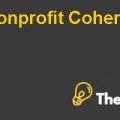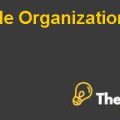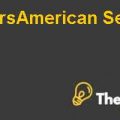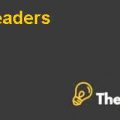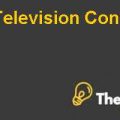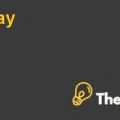STERLING HOUSEHOLD PRODUCTS COMPANY Case Study Solution
INTRODUCTION:
Sterling is a large company who deals in many consumer goods that includes laundry, utensils, soaps, cosmetics etc. Sterling is enjoying its high regarded brand name, high profit and impressive sales. The profit margin and the sales of company were continuously growing, however the units sold and the company’s operating expenses and costs were increasing at a higher rate than the inflation. To make itself stable, the company was attempting to invest into a new industry, to increase its growth opportunities. Company planned to enter into the medical and health care industry, as there were more opportunities to grow. Company identified to invest in Montagne Medical Instruments, who was not only manufacturing high quality medical instruments, but also marketing germicidal, sanitation and antiseptic products.
BUSINESS RISK ASSOCIATION WITH ACQUISITION:
Every industry is associated with different business risks. However, unsystematic risk for example, is always associated with every industry. as Sterling is entering into the new business, it may hold some business risks including different strategies and methods of running business. The calculated beta helps to identify the risk that is involved in any respective industry. re levered beta is calculated through the risk free rate, market risk premium and unlevered beta.
COST OF EQUITY AND WACC:
In order to calculate WACC, we need to find out the cost of equity. For the cost of equity, calculation of re levered beta is necessary to find out the associated risks with the investment plan.
To calculate re levered beta, unlevered beta coefficient is identified by the comparable company’s analysis data. With the average of selected comparable companies, unlevered beta is calculated which helps to identify re levered beta. As re levered beta is 0.607, it is showing that the risk is not much associated with the industry.
In order to calculate cost of equity, the Capital Asset Pricing Model is used, which consist of some assumptions. Some assumptions needed are risk free rate and market risk premium. With the help of treasury bills rate, the risk free rate is assumed at 3.1% and expected market risk premium at 5% in the industry.
Taking all these assumptions along with re levered beta, cost of equity for the proposed investment plan has been calculated at 6.4%, along with the cost of debt at 5.1%. With the cost of equity and cost of debt, with the value of equity and value of debt, in the formula of Weighted Average Cost of Capital, the cost of capital is identified at 6.39%. It is expected that the target capital structure is 30% of debt and 70% of equity.
STERLING HOUSEHOLD PRODUCTS COMPANY Harvard Case Solution & Analysis
CORRECT CAPITAL STRUCTURE AND WACC:
The management of the company is considering to achieve the targeted capital structure of 70% equity and 30% debts, therefore it is expected that the targeted capital structure is the correct one for the evaluation of the proposed acquisition plan. The calculation of the cost of equity and the cost of debt is based on the expected capital structure.
It is assumed that the company’s capital structure will be based on 20% of debt. As the company is going to raise capital through finance, the current capital structure will be affected by raising the debt financing and will lead to 30% debt and 70% equity capital structure. The cost of capital is calculated at 6.39% of the proposed investment plan, keeping in mind the targeted capital structure.
It is assumed that the WACC will remain the same throughout the life to keep the calculations simple. However, the cost of capital changes continuously throughout the time, with the changes in market returns, market premium and risk beta. To keep it simple, WACC is calculated for one time, otherwise continuously changing the calculation will make it complex and difficult.
FREE CASH FLOW OF ACQUISITIONAND INVESTMENT:
To analyze the investment opportunities till 2022 with respect to the base case investment appraisal, free cash flow method is used. It is assumed that the free cash flow method is the correct method to evaluate the proposed investment plan, as it carries the cash flow in real terms.
The free cash flows are calculated by adding profit after tax to depreciation, and then subtracting capital expenditure and adjusted net working capital structure. However, before calculation of cash flows, forecasting is performed on the basis of average growth rate. That is, to identify the operating profit of 2018, the figure of 2017 operating profit is multiplied to the added last two years’ average operating profit. Similar method is used for all projected calculations.
It is expected that capital expenditure will remain the same for all the next projected years and average growth model is used to calculate changes in the net working capital. Along with tax rate of 35%, free cash flows are calculated for the next 10 years. In addition, to realize future gain after 10 years, terminal value has also been calculated. The information of year 2022 free cash flows is assumed for the calculation of terminal value.................
This is just a sample partial case solution. Please place the order on the website to order your own originally done case solution.

